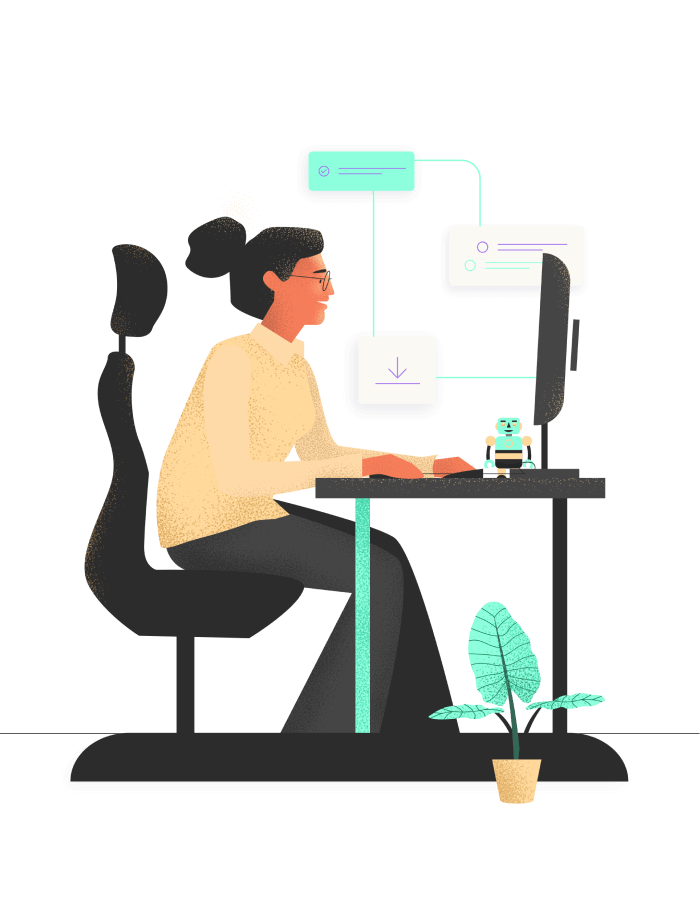Your Churn Prediction Model Isn’t Helping You Reduce Churn. Here’s What Will
When you run a successful SaaS business, you always have eyes on acquiring new customers. In order to stay successful, you need to keep one eye on retaining the customers you already have. After all, it costs five times as much to acquire a new customer as it does to keep an existing one.
Customers choose (and stay with) companies to accomplish a unique goal, whether it’s reducing accounting costs, managing projects, or improving sales. If you help customers achieve their goals, they stay; if you don’t, they leave.
Customer goals are often thought to be key when predicting churn. While software companies largely fall back on internal data and metrics—such as time on site, support tickets and NPS scores— to predict which customers are likely to leave, these metrics are not accurate churn predictors. They may not tell you much about whether or not your customers get enough value from your product. These metrics may be symptoms of customer value (or lack thereof), but they cannot compare with direct assessments of your customer’s goals.
SaaS companies can predict churn in a more reliable manner by using qualitative data they get through aligning with their customers’ unique goals and staying in close communication.
Traditional churn prediction models fail for high-value customers when the focus is on metrics instead of customers
Companies have heavily invested in technology to understand their customers. When it comes to churn prediction, SaaS businesses rely on reviewing internal data, recognizing customer behavior patterns, and using various algorithmic prediction models. These methods provide limited views that either don’t give the complete picture or give it too late.
Current ways of predicting churn don’t offer consistent results because they rely on behavior patterns. They conclude that when a customer behaves one way, they’re in the clear, but if that customer behaves in another way, the relationship is in trouble. Here’s the problem: while the behavior could be accurate for one customer, it could be completely different for another. Different customers have different needs, and so they could churn for completely different reasons. These reasons, which help you better understand churn, are invisible when you base predictions on aggregate patterns.
Let’s walk through a hypothetical. Traditional churn prediction might assume that customers reaching out for support would indicate they're unhappy, but that isn't always the case. A customer could be reaching out because they want to understand every facet of the tool; reaching out to support could indicate they might become a power user. Churn prediction based on this behavior pattern would be inaccurate.
Let’s take this a little further. A customer may not reach out at all, but that doesn't mean things are going well. They could be so overwhelmed by your product that they haven't even started using it and wouldn't know what questions to ask a support agent. To them, it is easier to cancel rather than reach out and attempt to understand the applications. Again, churn prediction based on this behavior pattern would be inaccurate.
Further, this kind of speculative analysis isn’t just inaccurate, it’s slow. It attempts to measure behaviors that indicate something’s already gone wrong. By the time the data points to this risk, even if it is accurate, it may be too late. Once your customer begins behaving like they’ll churn, you may have missed your chance to change their mind.
Churn prediction is more accurate when you focus on your customers’ unique goals and experience
Focusing on what your customer wants and needs from your product makes churn easy to understand and predict. By honing in on what they hope to achieve, and whether they are achieving it with your product, you are able to predict how likely they are to keep using it.
The first step to predicting churn is to define what success looks like to your customers. Once defined, you have clear and direct indicators to determine how to build a customer portal or experience that can help facilitate growth and happiness with your product or service.
By accompanying them on their customer journey and asking about their experience, you’ll build a relationship. This is a great way to become aware, in advance, of problems that may lead them to churn.
Fierce customer focus won’t just help you predict churn, it’ll help you prevent it
Customer experience needs to be at the core of predicting churn. 89% of companies recognize customer experience as being a vital factor in boosting customer loyalty and retention. In business, “knowing when a customer is going to churn is the first step to preventing it.”
The key is to focus on a customer’s problem before you look for a solution. The insights you gather when listening to your customer’s struggles and frustrations provide valuable data. You’ll not only be able to empathize with the problem, but you’ll also be able to help fix that problem, thus reducing their friction with your product. This is what takes the customer experience from good to great, making it easy to predict, and more importantly, prevent customer churn. It’s the best way to protect your bottom line.
While you want all touchpoints to provide value to your customer, building a relationship with them from the start is invaluable. This will give you the opportunity to understand them and help them achieve their goals. When you align with your customer and their pain points, you ensure your product meets their needs.
Get close to your customer and start talking to them
The most important thing you can do to predict and prevent churn is to build a relationship with your customer. Half of SaaS companies will go out of business unless they focus their customer success strategy on the customer's goals. Ultimately, the winners will be the companies that get closest to their customers.



